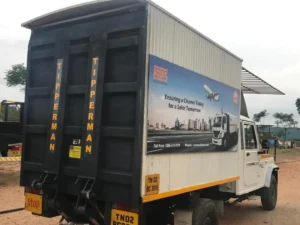Tail Lifts
Kora Tail Lifts
Tail lifts greatly simplify the safe loading and unloading of trucks, offering users exceptional cost efficiency, flexibility, and operating comfort. With a wide range of over 40 products, KORA provides solutions for weight classes ranging from 500 kg to 4,000 kg. Our extensive service network ensures comprehensive and seamless support for every customer. Key application areas include food and transport logistics, waste management, emergency services, local authorities, and the leasing and rental industries.
Kora Tail Lifts Manufacturer: Superior Material Handling Equipment
One of the top producers of high-end material handling equipment, Kora Tail Lifts’ skilled designs make loading and unloading tasks easier. Our cutting-edge tail lifts provide exceptional durability, efficiency, and safety to a variety of sectors. Kora promises dependable performance catered to your unique requirements with its state-of-the-art engineering and adaptable solutions. Select Kora for top-notch material handling solutions that guarantee smooth operations and increase efficiency.
KORA International Inc. brings top-notch lifting solutions directly to your location, tailored for industrial and commercial use—no need to send your vehicle to us!
Our Lifting Solutions:



Why Choose KORA?









CONTACT KORA INTERNATIONAL Inc. FOR SPECIAL CUSTOMIZED LIFTS





